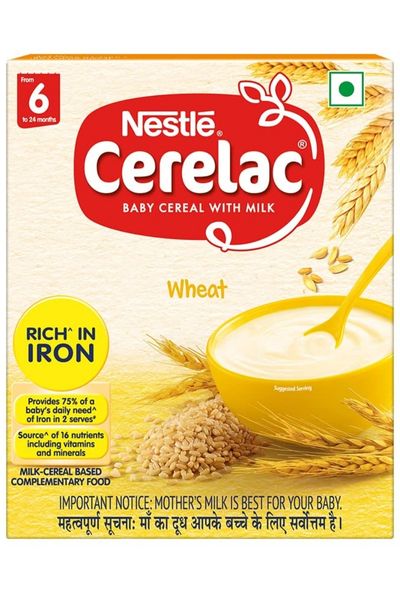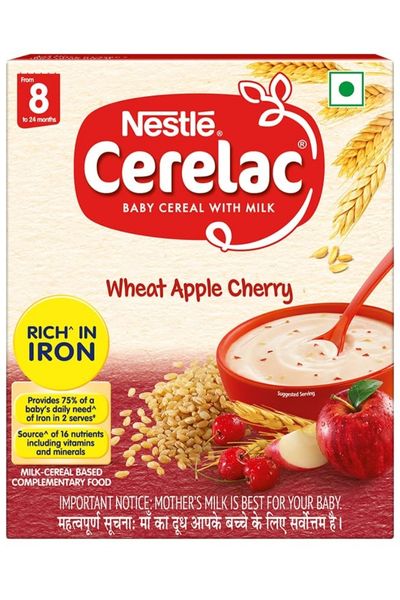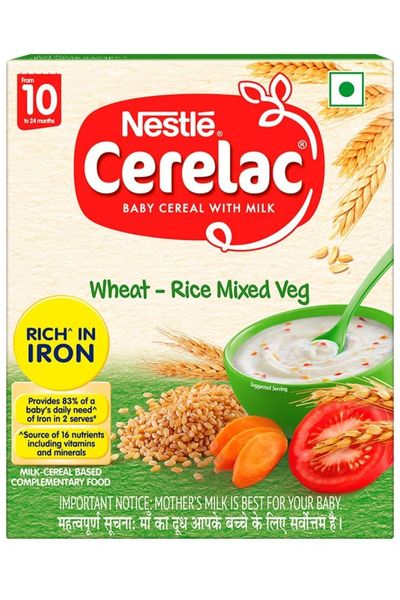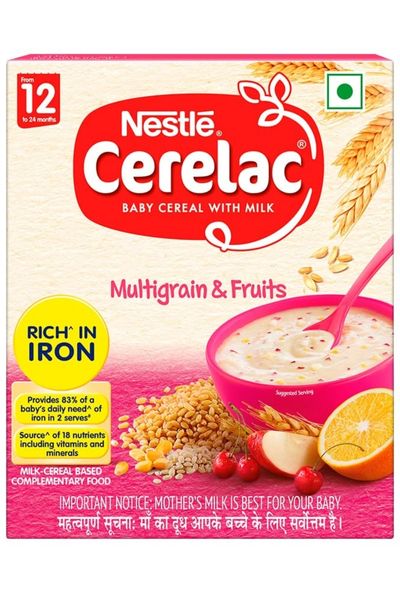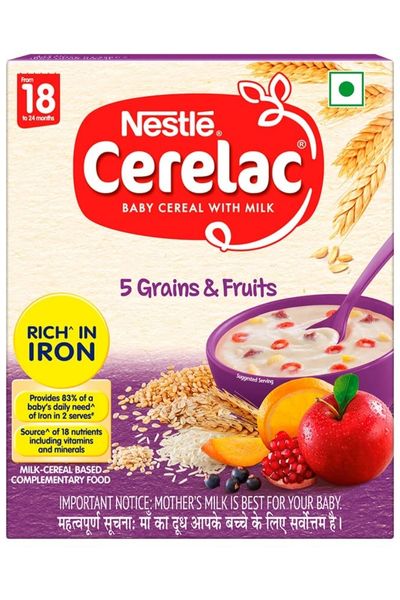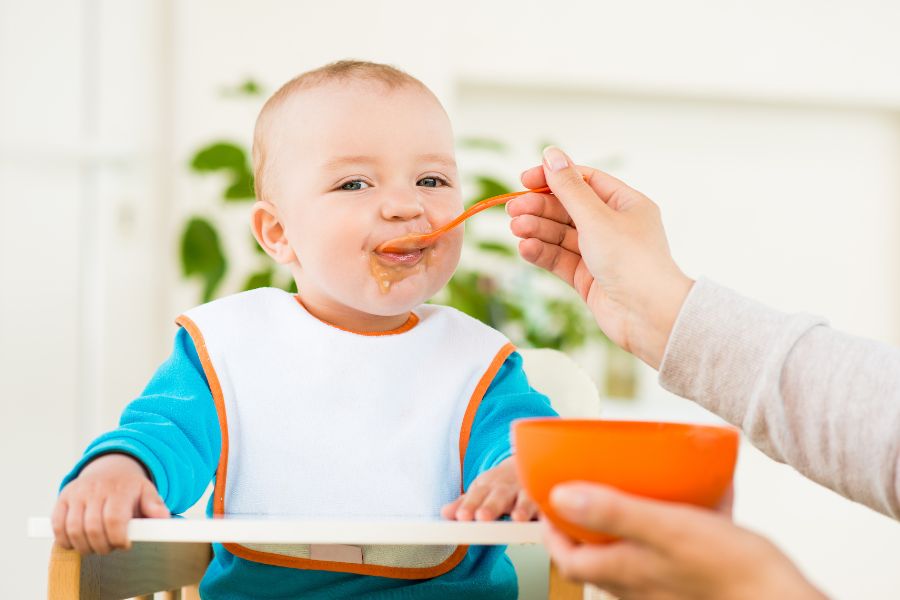About: What are Cerelac Stages – When and How to Feed Baby?
Cerelac is one of the most popular baby food brands in the world, produced by Nestle. It is a children’s most loved meal and comes packed with essential nutrients.
However, the question arises when to start feeding a baby with Cerelac along with milk or semi-solid foods. To simplify things, there are predefined Celerac stages which are classified by age groups.
In this article, we will discuss about Cerelac stages, the Pros and Cons of Cerelac and a bonus Tasty Cerelac Recipes for babies.
What are Cerelac Stages?
Nestle manufactures its propriety baby food supplement known as Cerelac. They have a wide range of products in this category, including Cerelac made from rice or wheat along with added ingredients such as fruits, oats, honey, etc., depending on the stage of Cerelac.
But the main question arises when to start feeding Cerelac to your baby. To overcome your worries, we’ve listed the 4 Cerelac stages that are suitable for infants in different age groups.
Also Read: 8 Best Baby Diapers in India 2024
Cerelac All Stages List
Cerelac is available in a broad selection of instant cereals for infants. These are developed according to the baby’s age:
Cerelac Stage 1 (6 months +)
The Cerelac Stage 1 Baby formula is designed for infants above six months. It comes in three different options: Cerelac rice, Cerelac Wheat with apple flavour and Cerelac Maize. You can feed your baby in the 6 – 8 months age bracket with any of the variants as they are free of gelatine and are simple to digest.
Cerelac Stage 2 (8 months +)
Cerelac Stage 2 is for 8 – 10-month-old infants. Baby’s taste buds develop as they grow; in order to cater them, Cerelac stage 2 comes in different variants such as Banana and Honey flavours. These flavours, along with the chunks of fruit ingredients, make infants’ taste buds go wild. Cerelac Stage 2 should be your baby’s ideal food as soon as they reach this age.
Cerelac Stage 3 (10 months +)
Cerelac Stage 3 is for babies over ten months of age. Cerelac stage 3 introduces more complex and robust flavours; you can choose wheat honey dates, ragi apples, or wheat rice mix fruits. These combinations are very popular with babies and are also very nutritious. When your baby reaches ten months, you can go for Cerelac Stage 3.
Also Read: Know the Difference Between Lactogen vs Nan pro?
Cerelac Stage 4 (12 – 18 months)
Cerelac stage 4 is ideal for children already eating solid adult food. Hence, it can be a little challenging to be accepted by children. To overcome that problem, Nestle Cerelac Stage 4 tastes similar to regular adult food, which can be used by children aged 1 – 2. You can choose from multigrain with fruits, khichdi and ghee, multigrain, multigrain dal vegetable, or multigrain and fruit flavours.
Cerelac Stage 5 (18 – 24 months)
Cerelac Stage 5 contains a combination of grains and fruits that are shaped in a textured manner so babies can chew the food provided to them. They also taste similar to solid foods, which the babies are accustomed to at that age.
However, parents need to note that most varieties of Cerelac have the ingredient of skimmed milk; hence if your child is lactose intolerant, then consult your paediatrician beforehand. Additionally, if your child has a gluten allergy, consult your doctor prior to feeding your baby, as wide varieties of Cerelac include wheat flour as the primary ingredient.
Also Read: 6 Best Baby Soap for Fairness in India 2024
Pros of Cerelac
- Paediatricians recommend using Cerelac as a complementary nutrition supplement in addition to the mother’s breastmilk as it provides additional vitamins, iron, and calcium which are necessary for the baby’s overall development.
- The porridge-like texture of the meal is perfect for babies as it doesn’t cause any gagging or choking.
- The baby food is easy to make and won’t take your time. The intense flavours and savoury taste make them a favourite among babies. Moreover, Cerelac is easy to digest and won’t cause any discomfort to the baby’s sensitive stomach.
- It is a great travel companion that parents can give their children a healthy, delicious meal on the move.
- It does not contain any harmful preservatives or food colours.
Cons of Cerelac
- Cerelac has a small amount of added sugar to enhance the taste. Meal with higher sugar content isn’t an excellent choice for babies.
- Children who are fed only Cerelac instead of home food may become averse to eating home-cooked food.
- The lactose and gluten content in Cerelac may be overlooked and can cause allergic reactions.
- Infants allergic to lactose and gluten should consult a paediatrician before consuming.
WHO states that the best time to introduce semi-solids to a baby is when they turn six months; parents must give priority to breastmilk as it is a wholesome meal.
According to American Paediatric Association (AAP), if the baby starts to show a liking for other foods apart from breast milk (e.g., if the baby gets excited seeing adult food, drooling, or salivating at the sight of food), then semi-solids can be introduced to the baby between 4 and 6 months.
However, it is essential to remember that the baby must be able to hold his head straight and be able to sit upright with some support. That is the ideal sign to begin feeding the baby. It is important to remember that breastmilk is the best nutrition source for a baby, so it should be continued.
How to Prepare Cerelac Stage 1,2,3,4?
- The idea of feeding your child other than the mother’s milk (or baby food) for the first time could be an overwhelming process, particularly for new parents. Read the directions on the package carefully. The amount of Cerelac may differ based on the specific variant.
- Before preparing food for your baby, wash your hands well and ensure you use clean utensils. Also, ensure that the storage container for Cerelac is sterilized.
- Now, take a vessel and boil drinking water for five minutes, and allow it to cool to room temperature prior to making the baby food.
- Determine the water quantity as well as Cerelac as indicated on the package. Make sure to use the scoop included inside the box. Furthermore, level the Cerelac scoop as stated on the label as an excess amount of either water or Cerelac could lead to a faulty preparation.
- Mix the water with the Cerelac powder and continue stirring until you achieve a porridge-like texture.
- Feeding should be done as soon as possible or in less than 30 minutes, as there is a distinct possibility of bacterial growth in the porridge if not eaten soon. And remember to throw unused feed.
Frequently Asked Question (FAQ)
How often can I give Cerelac to my baby?
The number of times Cerelac can be administered to babies depends on the baby’s age. Beginning at six months, you could give Cerelac at least twice daily before gradually increasing it.
Can I feed Cerelac at night?
Of course! Cerelac could be fed to infants at night as a nutritious food which will keep them satiated for several hours. But, be careful not to overfeed at night to ensure they sleep peacefully.
Conclusion
Generations have grown up using Cerelac baby food across the globe. The wide variety of options and convenience make this instant food a favourite among parents and infants. Additionally, it’s offered in stages that are designed to suit the age of a baby between six and twenty-four months.
While Cerelac is loaded with essential nutrients and probiotics that are beneficial to infants, it does have some disadvantages and a risk of allergic reactions. Hence, it is recommended to talk with your paediatricians before giving Cerelac to your child.
So, that concludes the What are Cerelac Stages – When and How to Feed Baby topic. Do let us know your comments and feedback about this article. If you have any questions, you can ask them in the comment section.


